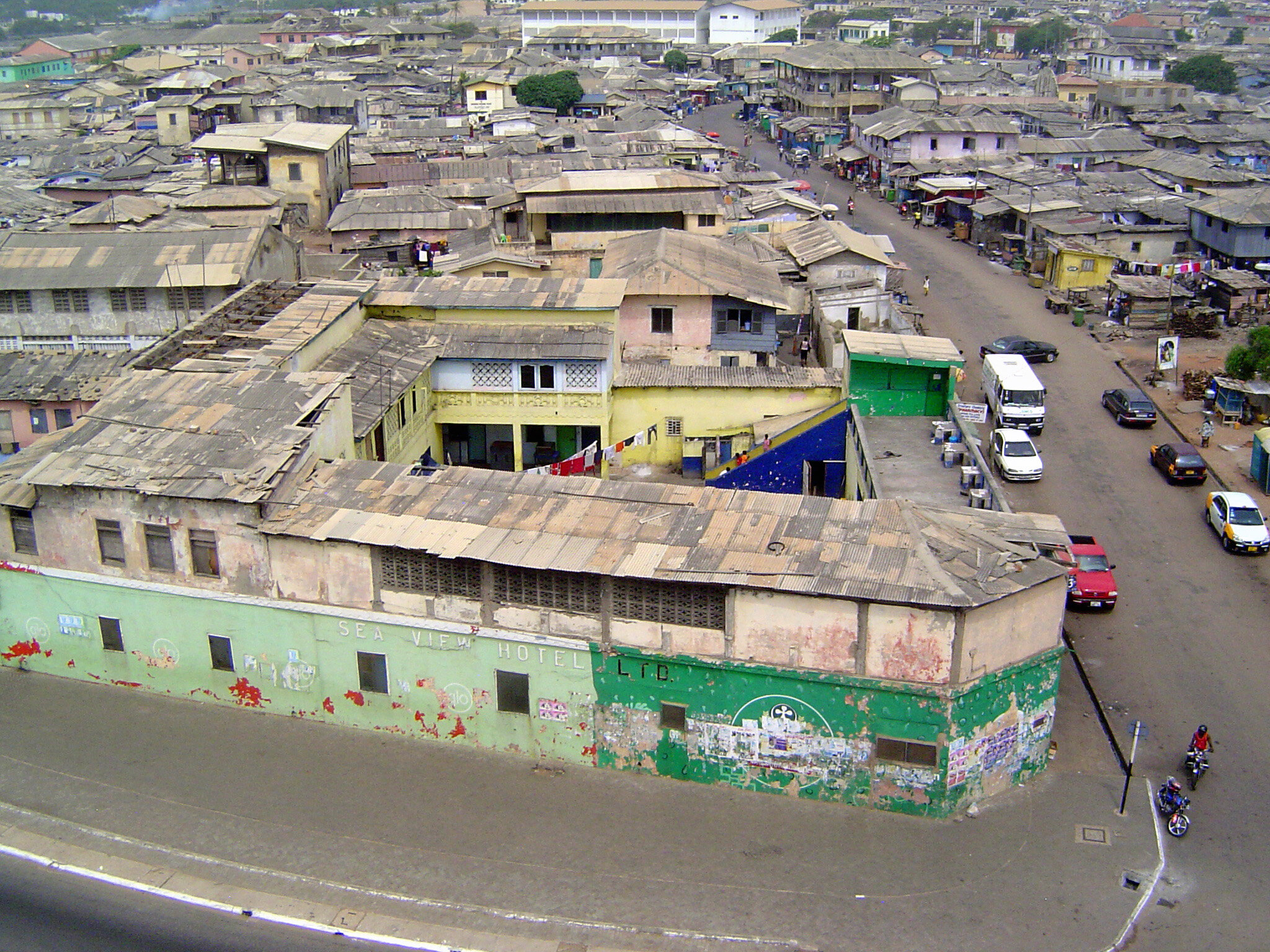“Afropean Architecture” in Accra
A Look at African-European Hybrid Building Forms in Ghana
By Selorm Afeke
Before colonization, the people of what came to be Accra in the Gold Coast lived in houses which were built using methods of construction and materials available locally. I may therefore not be wrong if I say the people had their own architecture as they had their own way of dealing with and responding to their housing needs in the built environment.
One example of pre-colonial construction was the rammed earth construction system that involved the use of swish-clay, straw and other materials that were rammed into place (Micots, 2015). This enabled buildings to be constructed one layer at a time. I believe this was one of the ingenuities that enabled some of the earliest inhabitants of the Gold Coast to explore their architecture one house at a time. I also imagine that there was not so much pressure for ordinary people to build unique houses as they were limited to rammed earth construction and other methods such as the wattle and daub method. This resulted in the building of simple structures with roofs that followed the shape of the buildings.
Wattle and Daub Construction Source: Ulrich Hollmann
European conquest and colonisation came with exposure to something new and different which then led to some changes in architectural styles and construction methods. Eventually, some African elites adapted some of these styles of architecture using locally available materials and methods. This resulted in hybrid buildings that were developed and used for various functions and activities. This article explores this hybrid architecture through some of the various examples of what is referred to as “Afropean Architecture” (Manful, 2019), highlighting what makes them Afropean as well as their current use and condition.
There are certain distinct features in hybrid buildings that set them apart from the traditional ones. These can be seen in the materials that were used, the number of building storeys as well as some external features on the buildings. Afropean buildings tend to have some features borrowed from traditional African building styles as well as European styles of building.
An example of an Afropean hybrid building that held much importance in Accra is the recently-demolished Sea View hotel in Jamestown, Ga Mashie. This was one of the first hotels in the Accra, and it hosted many famous and prominent visitors to the Gold Coast. In the Sea View Hotel, there was the incorporation of the courtyard system and a roof that followed the shape of the building in a way that was typical to traditional houses in the region. Its two floors were wrapped around a courtyard that was used for various communal functions. It is quite unfortunate that there is nothing but ruins and old photographs left of this historic structure today.
The Sea View Hotel. Source: The Great Mirror
The type of materials used in construction distinguishes hybrid Afropean buildings from traditional African and European ones. Traditional African buildings were typically made with timber frames covered with mud/clay or rammed layers of mud/clay and having a thatch roof or an organic material suitable as a roof covering. This has been the typical look of traditional buildings. Common materials that were used for hybrid buildings in the 18th century especially along the coastal Jamestown area in Accra were stone, laterite and cement. The cement was used to further give a smooth surface to the walls to receive finishes like paint.
There are some external features on Afropean hybrid buildings that distinguish them from African traditional buildings. In traditional methods of construction, layer lines on the earth walls of buildings often indicated how they were built. These layer lines could be hidden when the walls were smoothened, or revealed when walls were left in their raw form.
Layer Lines in Rammed Earth Construction. Source: Hive Earth
For important buildings such as places of worship, there were some decorative features such as carvings of traditional symbols and animals. Openings like windows and door were often made with timber. These features were modified in these Afropean buildings as they used different materials to achieve a different look to the buildings. There were additional features such as the use of pilasters, belt courses, arched windows, prominent sills, entablatures as well as cornices - borrowed from the British Palladian style (Micots, 2015).
The Anglican Bookshop Building that is located along the John Evans Atta Mills street in Accra is a building with prominent features that show Afropean hybridity. This is a simple two storey structure with exterior features such as glass windows and doors, prominent window sills on the first floor and a Dutch roof which was not typical in traditional Gold Coast. It also has a belt course in between the floors as well as an exterior cornice that runs right at the base of the ceiling of the building. The pilasters projecting from the exterior walls of the building also clearly shows the influence of the European culture on the building.
The Anglican Bookshop. Source K Manful
A residential building that is worth looking at is the Franklin house located in Jamestown. This particular building used the stone nog construction method which was adapted from European construction styles (Micots, 2015). As the Europeans settled along the coast, such buildings like the Franklin house were constructed in brick, stones and lime-based mortar layers. Due to the nature of the construction, the walls were fairly thick which helped greatly in regulating indoor temperatures during both the hot and cool seasons. Typical of such European influenced buildings were the presence of arched openings, the use of brick, pilasters and entablatures. Although this building is currently in ruins, it still speaks of its time and influence and therefore attracts tourists who are ready to listen to the stories it tells.
Franklin House, June 2021. Source: Selorm Afeke
Over the years, there have been many unheard cries from these buildings that have so much stories to tell of our history. This has led to the neglect and demolition of such structures, leaving much to our imagination when asked about our architectural history as a nation. I believe there is still hope for the few surviving structures, and as such should be given due consideration.
BIBLIOGRAPHY
Manful, K. (2019) Whose Style? Taste, Class and Power in Accra’s Architecture- The Metropole
Micots, C. (2015) Status and Mimicry: African Colonial Period Architecture in Coastal Ghana. University of Witwatersrand.
Wiley, A.N. (2014) Greater Accra and Cape Coast





